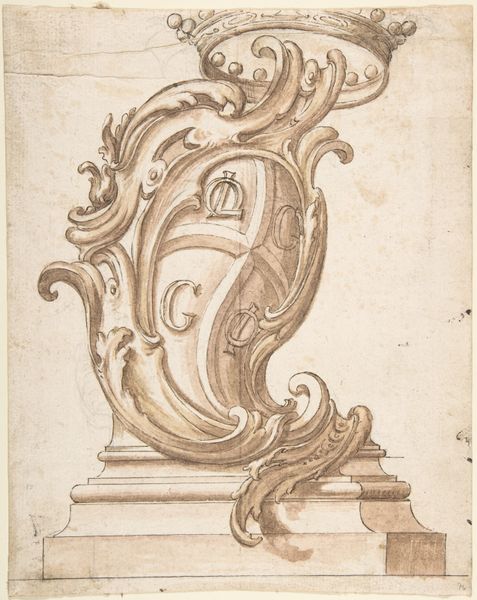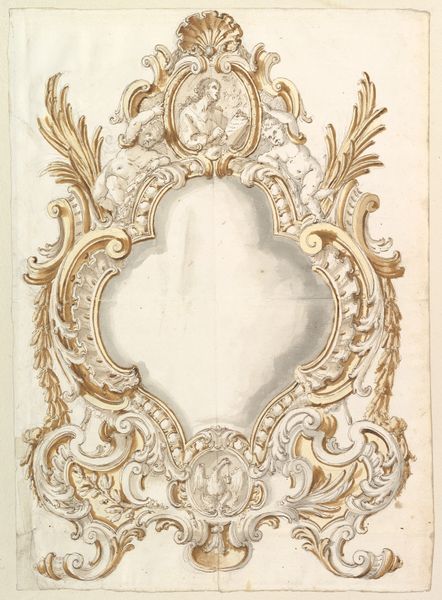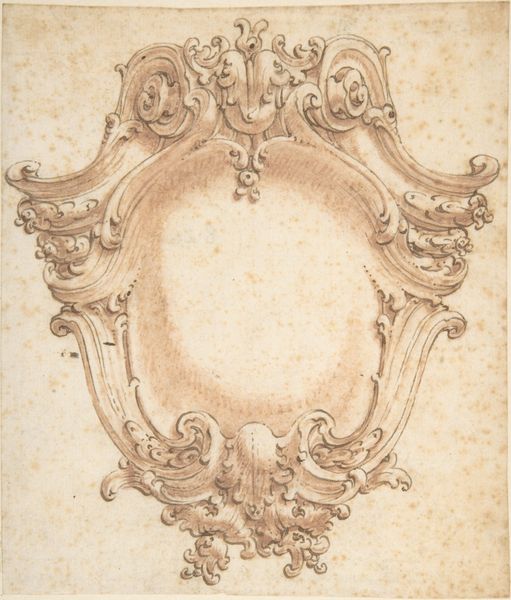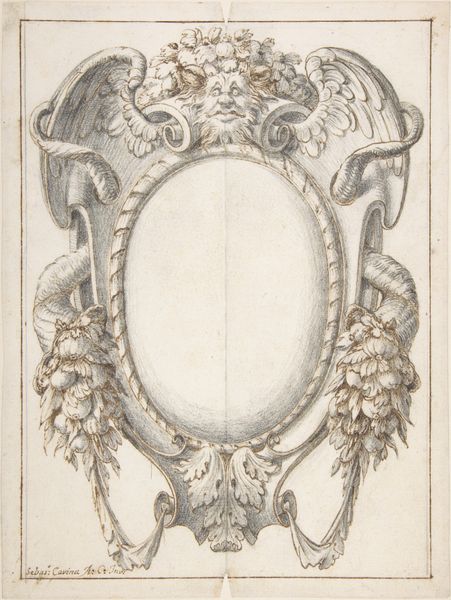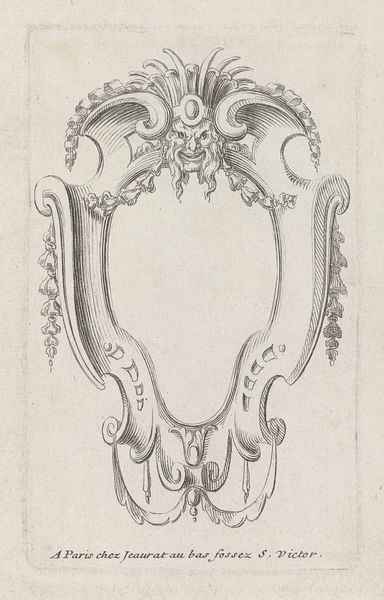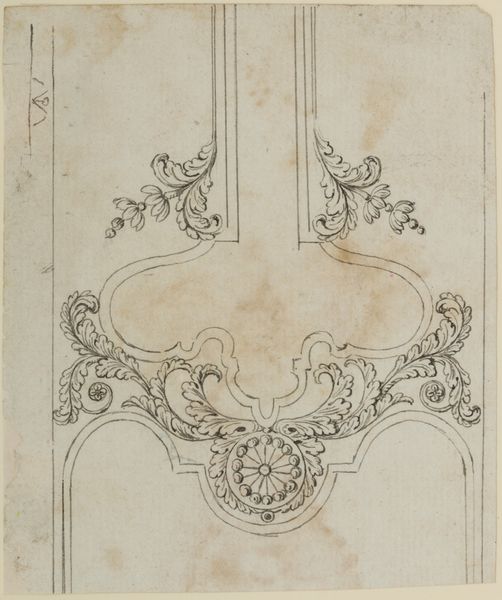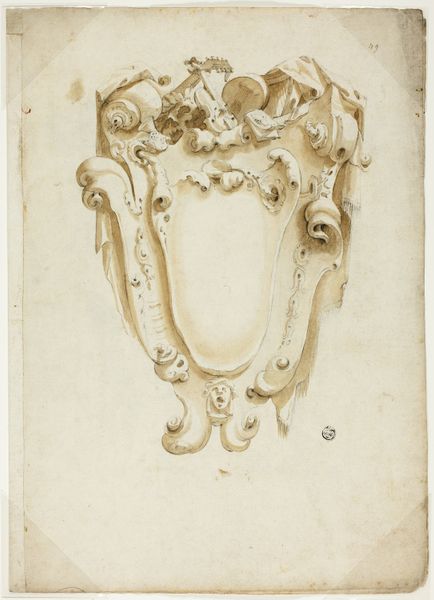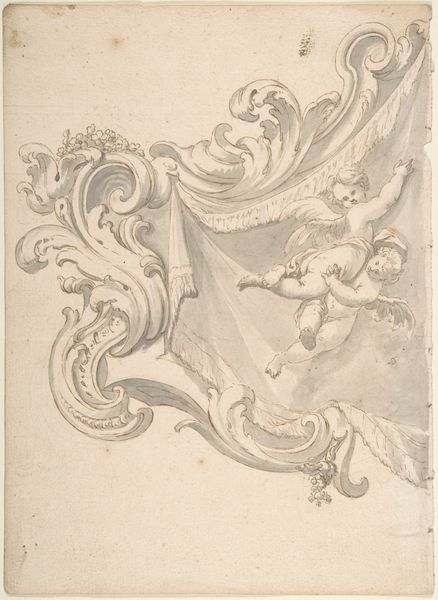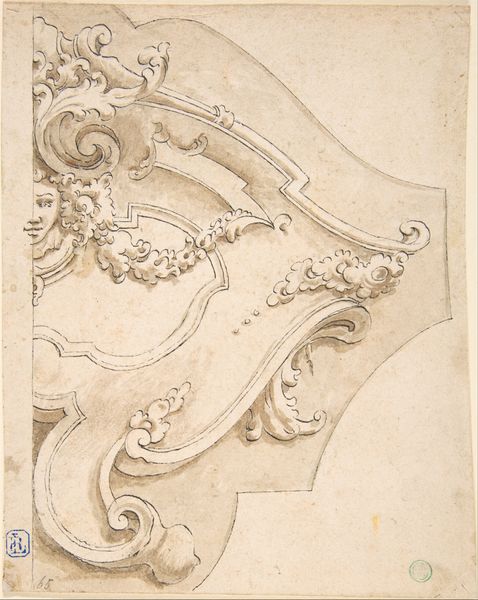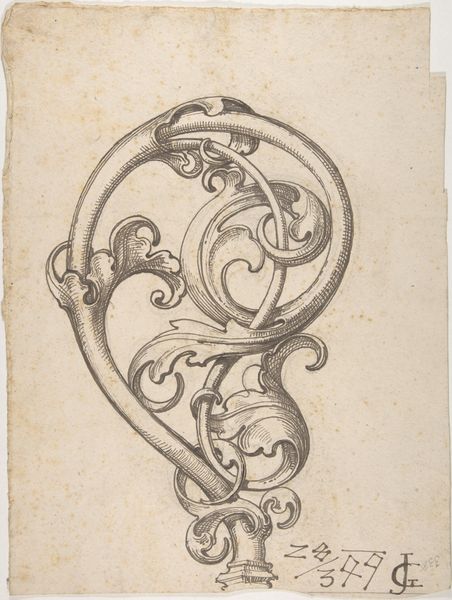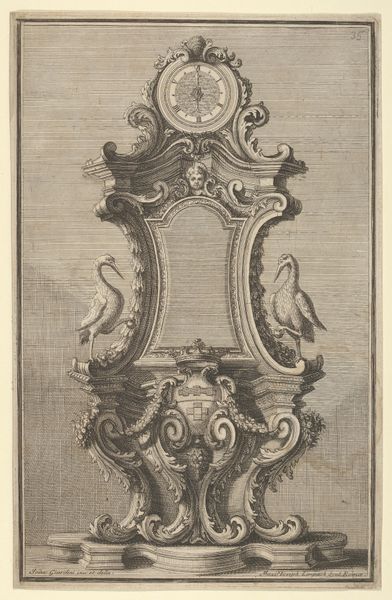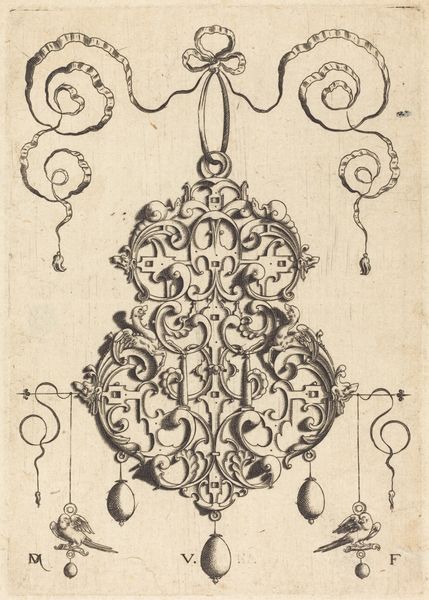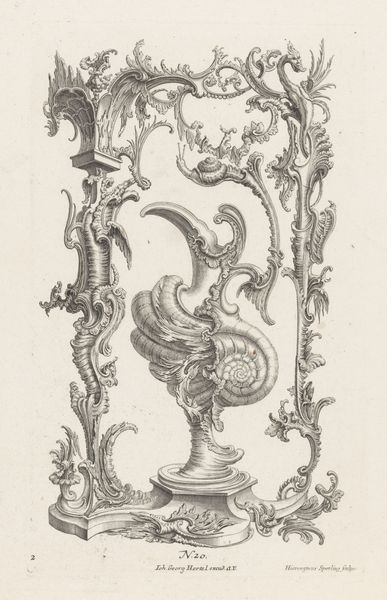
Study with Two Alternate Designs for a Cartouche 19th century
0:00
0:00
drawing, print, paper, ink
#
drawing
# print
#
classical-realism
#
paper
#
form
#
ink
#
line
#
academic-art
#
decorative-art
Dimensions: sheet: 9 1/8 x 6 15/16 in. (23.2 x 17.6 cm)
Copyright: Public Domain
Editor: This ink drawing on paper, titled "Study with Two Alternate Designs for a Cartouche" from the 19th century, features what looks like two shield designs side by side. There's an impressive formality and symmetry here. How do you interpret the symbols at play in this piece? Curator: Immediately, I’m struck by the bilateral symmetry – that perfect mirroring. Symmetry often symbolizes order, balance, and the classical ideals. These cartouches, essentially elaborate frames for text or images, are themselves powerful symbols of authority and commemoration. Note how each side presents variations – a visual dialogue exploring different ways to express these concepts. Editor: So, even these slight alterations in the floral arrangements or the ornamental figures would have shifted the overall symbolic message? Curator: Precisely. Consider the acanthus leaves, a common motif. They can represent enduring life or even resurrection, depending on context. Even the way these elements are rendered, whether boldly or delicately, affects their impact. It speaks volumes about the desired emotional effect, doesn't it? Editor: It's amazing to think about the level of deliberate thought put into even decorative aspects like this. So much of that specific visual language is lost on a contemporary audience. Curator: It’s about unearthing the cultural memory embedded within these forms. We’re looking at more than just decoration; it's a carefully constructed language of symbols, reflecting societal values. It shows how cultural beliefs shape visual representation. Editor: I’ve learned that the act of seeing goes beyond surface level, recognizing historical meaning. Curator: Exactly. Understanding the power of these symbols unlocks new insights into history, and it makes us think about the symbols we use to express similar meanings today.
Comments
No comments
Be the first to comment and join the conversation on the ultimate creative platform.
